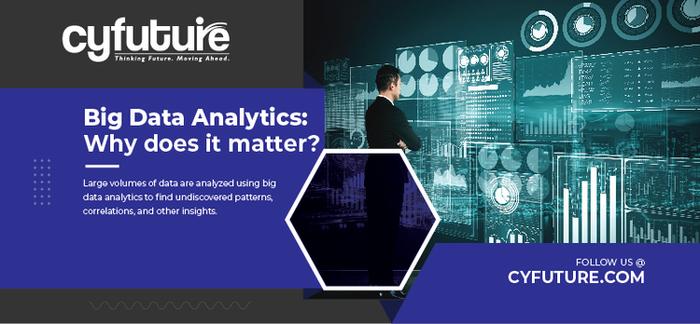-
Get Cloud GPU Server - Register Now!
Toggle navigation

Large volumes of data are analyzed using big data analytics to find undiscovered patterns, correlations, and other insights. With today’s technology, you can quickly analyze your data and obtain insights from it, whereas this process would take longer and be less effective with more conventional business intelligence tools.
A company’s most important resource is its data. Data is always awake. Massive amounts of data are generated every second from all websites, phones, sensors, and other devices. Whether the data are useful or not, we typically preserve them for later use. We produce more than 2.5 quintillion bytes of data each day, if we look at the stats. Although there are many big data issues in this case, businesses have discovered that success comes from understanding how to gain insights from data.
The idea of big data has been around for a while, and most firms now realize that by capturing all the data that enters their operations (perhaps in real-time), they can use analytics to extract significant value from it. When adopting advanced methods like artificial intelligence, this is especially true. But even in the 1950s, long before the term “big data” was coined, companies were employing basic analytics (basically, manually going through numbers in a spreadsheet) to find patterns and insights.
Speed and efficiency are two of big data analytics’ main advantages. Businesses used to gather data, run analytics, and uncover the knowledge that might be utilized to inform future decisions just a few years ago. Companies may now gather data in real-time and analyze big data to make choices quickly and with more excellent knowledge. Organizations gain a competitive edge they didn’t have before by being able to operate more quickly while maintaining their agility.
Organizations may harness their data and use big data analytics to find new opportunities. This results in wiser company decisions, more effective operations, greater profitability, and happier clients. Businesses that combine big data with sophisticated analytics benefit in a variety of ways, including:
Big data analytics spans a variety of technologies. Big data can, of course, benefit from advanced analytics, but in practice, a variety of technologies come together to maximize the value of your data. The key figures are listed below:
Cloud computing, a subscription-based delivery model, offers the scalability, quick delivery, and IT efficiencies necessary for successful big data analytics. Organizations of all sizes find it intriguing since it eliminates a lot of practical and budgetary obstacles to integrating IT requirements with changing business objectives.
Before it can be successfully evaluated, data needs to be of high quality and well-governed. It’s crucial to have repeatable procedures for creating and upholding standards for data quality because data is continually coming into and leaving an organization. Once data is trustworthy, firms should set up a master data management program to bring the entire company together.
This kind of technology is known to assist the experts with large data in discovering patterns midst the data. This information is also used for further analytics- especially in answering the complex business queries and questions. The Data Mining software also helps to shift through the chaotic and repeated noise of data, highlight the relevant, and use the same information to assess outcomes. They also accelerate the speed of making an informed decision.
This technology is inclusive of Data Lake and Data Warehouse. In order for business users and data scientists to access and use the data as needed, it is essential to be able to store enormous amounts of both organized and unstructured data. A data lake quickly absorbs vast amounts of unprocessed raw data in their original format. It’s perfect for archiving unstructured big data such as voice, streaming audio, and image content from social media. In a central database, a data warehouse keeps a lot of structured data. Numerous businesses employ both of the complementing storage techniques.
You can swiftly act on insights you gain from your data by examining it in system memory rather than from your hard drive. This technology makes it simple for organizations to stay agile and make better business decisions. It also enables them to run iterative and interactive analytics scenarios. This technology is able to remove data preparation and analytical processing latencies to test new scenarios and create models.
It is now possible to quickly and automatically create models that can analyze larger, more complicated data and provide faster, more accurate answers — even on a very large scale. Machine learning is a specialized subset of AI that teaches a machine how to learn. Additionally, by creating accurate models, a company has a better chance of spotting lucrative possibilities or averting unidentified threats.
Read more: Big Data Analytics Outsourcing: Improve your Business Decision Making with Analytics
Data, statistical algorithms, and machine learning techniques are all used by predictive analytics technology to calculate the likelihood of future events based on historical data. It all comes down to giving the greatest prediction of what will occur in the future so that corporations can feel more assured that they’re making the finest business decision feasible. Predictive analytics is frequently used in the areas of fraud detection, risk, operations, and marketing.
Companies have already begun to derive commercial value from data in our data-driven economy. With the introduction of the Internet of Things, better analytics and expanded connectivity have allowed businesses to take advantage of huge data-based opportunities. Big data solutions aid businesses in improving situational awareness, making wiser decisions, and gaining a competitive edge.